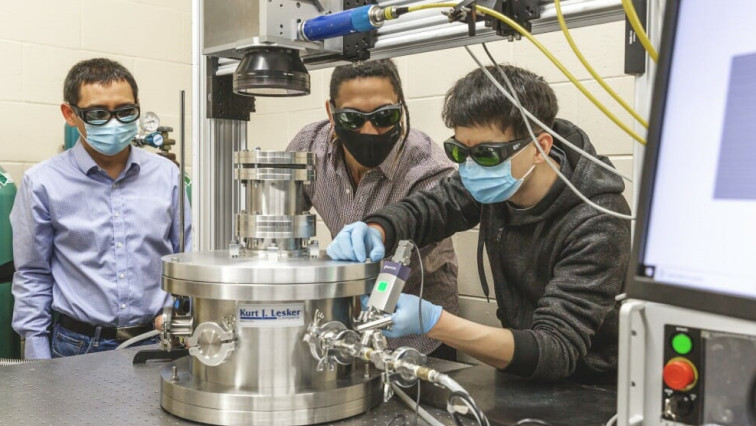Compared to conventional manufacturing methods, additive manufacturing (also known as 3D printing) is far better at producing metal parts with very complex shapes, making 3D printing attractive for applications in aerospace and biomedical industries, among others.
But there’s a downside. Metal parts created with additive manufacturing have defects, such as pores and cracks in the material, that significantly compromise the finished part’s strength and durability.
“Using metal 3D printing, we haven’t been able to consistently produce parts with the same high quality and reliability as those made by conventional methods, which means we have big concerns about using 3D-printed parts for critical or load-bearing applications where failure isn’t an option,” says Lianyi Chen, a University of Wisconsin–Madison assistant professor of mechanical engineering. “This quality problem is the biggest barrier for using metal 3D printing in various applications.”
Now, Chen and his students have discovered a way to enable a prominent additive manufacturing technique called laser powder bed fusion to produce metal parts that have significantly fewer defects. They detailed their findings in a paper published recently in the journal Nature Communications.
“We demonstrate a potential way to solve the quality problem by making metal 3D printing technology much more reliable, enabling it to produce consistent, defect-lean parts,” Chen says. “Using our unique method, we were able to 3D print a metal part that has very few defects and a comparable quality to that of a commercially manufactured part that you could buy off the shelf.”
It’s a promising solution to a longstanding problem in metal additive manufacturing, and it opens a door to widespread industry adoption of this manufacturing technology.
The researchers’ technique involves using ceramic nanoparticles to control instabilities in the laser powder bed fusion additive manufacturing process that cause defects.
Laser powder bed fusion uses a high-energy laser beam to melt thin layers of metallic powder in select locations. The material then cools, forming the finished metal part. However, as the laser interacts with the powdered material, the powder surface heats to boiling temperature and creates hot vapor. This vaporization creates pressure that pushes down on the pool of melting material causing droplets to splash out. These droplets can cause unpredictable defects in the printed part. Droplets also can collide and merge to form a larger droplet, creating even more problems in the additive manufacturing process and leading to subpar printed parts.
By coating the metal powder with ceramic nanoparticles, the researchers could control these instabilities. Using both high-speed synchrotron x-ray imaging and theoretical analysis, they found that the nanoparticle coating stabilized the melt pool, preventing liquid droplets from spraying out and forming the larger spatters.
“When we introduced the nanoparticles, we found that they made the liquid droplets almost have an armor on the surface, so that when they collided, they didn’t merge together,” says Minglei Qu, a graduate student and lead author of the study. “For the first time, we were able to get rid of the problematic large spatter.”
In addition to the possibilities it holds for 3D manufacturing, Chen says the advance could lead to improvements in a broad range of applications, including laser polishing, laser cladding, welding, casting, and fluid stability control, among others.
Read the original article on University of Wisconsin–Madison.







